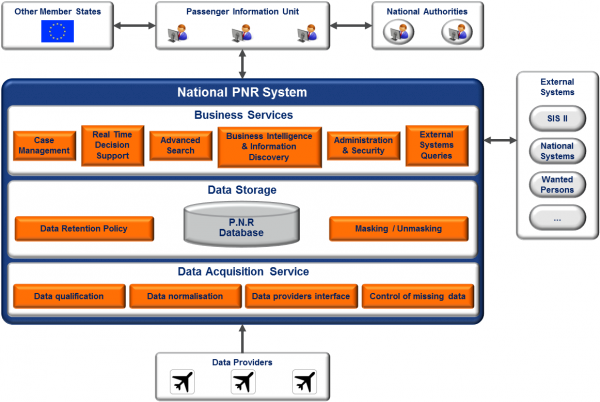Eurodac Implementierung (BD2015)
Inhaltsverzeichnis
The Cogent Systems/Steria European Commission's EURODAC Automated Fingerprint Identification System
The EURODAC Automated Fingerprint Identification System (AFIS) system will enable Member States of the European Union (plus Norway and Iceland) to identify asylum-seekers and persons who have crossed an external frontier of the European Union in an irregular manner and has been implemented to effectively apply the regulations defined in Dublin Convention. By comparing fingerprints Member States can determine whether an asylum-seeker or a foreign national found illegally in one Member State has previously claimed asylum in another Member State.
The Cogent and teaming partner Steria supplied EURODAC system utilizes a Cogent Systems computerized central database for comparing the fingerprints of asylum applicants and a Steria system for electronic data transmission between Member States and the database.
The central Cogent System utilizes its advanced biometric matching algorithms technology and proprietary Programmable Matching Accelerator (PMA) matching engines to drive the central computer database. This Cogent system is the fastest, most accurate off-the-shelf fingerprint-matching device in the world. Designed for use as the central fingerprint search/match processor(s) of a distributed network of fingerprint submission workstations, each PMA in a system can be configured to provide matching rates of up to 500,000 matches per second.
...
EURODAC Member States can now transmit tenprint records to the Cogent central system from asylum applicants and from alien people who may have irregularly crossed borders or who may be staying illegally in any of the EU signatory countries.
About Cogent Systems
Cogent Systems. Inc. based in South Pasadena, California, is a world-leading supplier of integrated system solutions using biometrics for law enforcement, government and commercial customers.
Cogent is the only provider of biometric identification systems that can accurately perform biometric comparisons using its Image Flow (patent pending) matching algorithm technology and its massively parallel processing Data Flow (patent pending) supercomputing technology to provide high performance real-time identification and authentication for information systems. For over 10 years, Cogent's core technologies have been proven effective in supporting identification needs for international law enforcement, government and civil agencies.
Steria Pressekommunique Eurodac
14 janvier 2003
La Commission européenne retient le savoir-faire de Steria en biométrie pour traiter les demandes d'asile et lutter contre l'immigration clandestine.
A l'heure de la fermeture du centre de réfugiés de Sangatte (Link anna), les questions de l'immigration en Europe sont plus que jamais d'actualité. La Commission européenne a inauguré le projet EURODAC aujourd'hui à 12 heures GMT (13h à Paris). Ce projet vise à traiter les demandes d'asile dans les états membres de l'Union européenne et dans d'autres états signataires de la convention de Dublin. Dans le cadre de ce projet, Steria, opérateur global de services informatiques en Europe, a mis au point d'une part, le système central d'identification des empreintes digitales (basé à Bruxelles), et d'autre part, dans 16 pays européens, le système de transmission électronique des empreintes digitales permettant de lutter contre l'immigration clandestine.
Le système EURODAC permet aux états membres d'identifier les demandeurs d'asile ainsi que les personnes ayant franchi irrégulièrement une frontière extérieure de la Communauté. En comparant les empreintes, ces états peuvent vérifier si un demandeur d'asile ou un ressortissant étranger se trouvant illégalement sur son territoire a déjà formulé une demande dans un autre état de l'Union européenne.
Steria "Advanced Passenger Information" und "Passenger Name Record"
EU-LISA Tätigkeitsbericht 2014
Die Planung wurde fortgeführt, um die funktionalen Veränderungen nach Annahme der Neufassung der Eurodac-Verordnung5 am 26. Juni 2013 durchzuführen (ab 20. Juli 2015 anzuwenden). Die wichtigste aufgrund der Neufassung durchzuführende entwicklungstechnische Änderung (um eine Abfrage der vorhandenen Daten zu Strafverfolgungszwecken in begrenztem Umfang zu gestatten) macht umfassende Modifikationen an operativen und technischen Aspekten der Funktionalität des Eurodac-Systems erforderlich. Während des Berichtszeitraums wurde damit begonnen, die Infrastruktur und Ressourcen einzurichten, um die in der Neufassung der Verordnung vorgesehenen Änderungen in der vorgesehenen Zeit zu implementieren. Ferner wurden die entsprechenden Projektteams und Governance-Strukturen eingerichtet und sind jetzt betriebsbereit.
